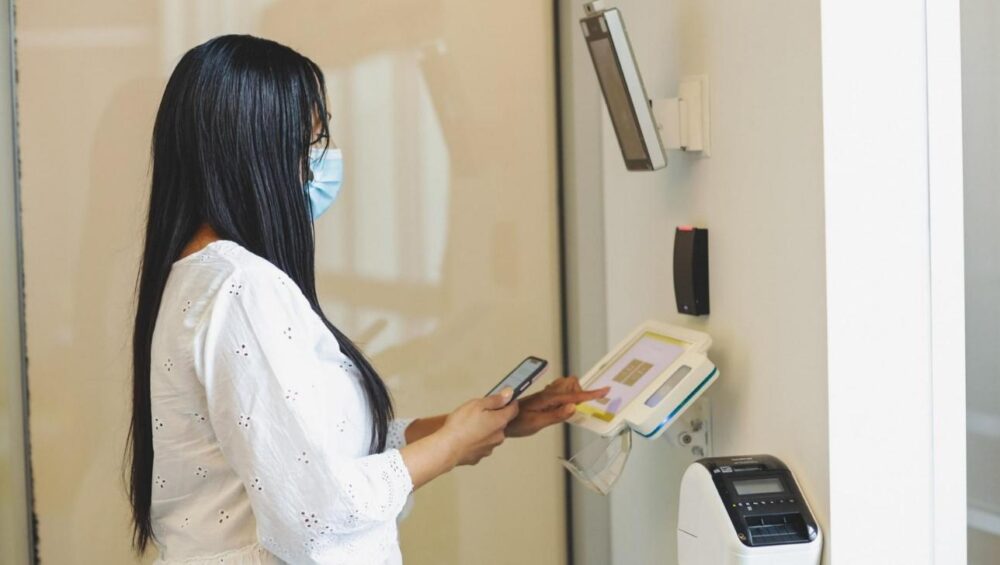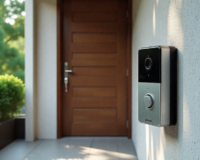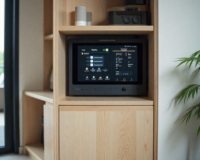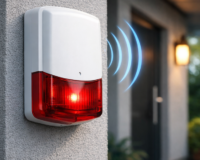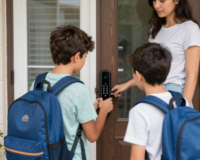Security is a top priority for businesses of all sizes, especially when it comes to safeguarding assets, confidential information, and employees. Access control systems provide a reliable and efficient security solution by permitting or preventing access to specific areas within a building or premises. With simplified management, real-time activity tracking, and enhanced security measures, access control systems offer a range of benefits that make them indispensable for modern businesses.
What is an Access Control System?
Access control systems are security mechanisms that manage who can access a particular area and when. These systems can be as simple as a lock and key or as complex as a system using biometric scanners and security software. At its core, an access control system aims to ensure that only authorized individuals can enter or leave specific areas, thereby safeguarding assets, confidential information, and people.
Components of an Access Control System
Access control systems can vary in complexity and functionality, but they generally include the following components:
1. Authentication Devices
-
- Keypads: Require users to enter a code to gain access.
- Card Readers: Use key cards or badges that must be swiped or tapped.
- Biometric Scanners: Use unique physical characteristics like fingerprints, facial recognition, or iris scans.
- Intercom Systems: Allow for verbal verification and remote unlocking of doors.
2. Control Panels: The brain of the system, which processes signals from authentication devices and decides whether to grant or deny access.
3. Access Control Software: Manages the entire system, including user permissions, access logs, and system configuration. It allows administrators to set access rules, monitor activity in real time, and generate reports.
4. Electronic Locks: Mechanisms that lock and unlock doors based on signals from the control panel. They can be electromagnetic locks, electric strikes, or smart locks.
5. Cabling and Network Infrastructure: Connects all the components of the system, enabling communication between devices. This can be wired or wireless, depending on the system design.
6. Power Supply and Backup Systems: Ensure that the system remains operational even during power outages, using batteries or backup generators.
Read more: Explaining Different Access Control Models and Methods
Types of Access Control Systems

Access control systems can be classified based on the technology and methods they use to authenticate users and grant access. Here are some common types of access control systems, along with their average costs and features:
1. Keypad Access Control
Overview: Keypad systems are a fundamental access control method where users gain entry by entering a predetermined code on a keypad. These systems are relatively cost-effective and easy to use, making them popular in both residential and commercial settings.
Key Features:
- Requires users to enter a PIN code.
- Easy to install and use.
- Can be integrated with other security systems.
Pros:
- Cost-effective.
- Simple to set up and use.
- No need for physical keys.
Cons:
- Codes can be shared or guessed.
- Limited to numeric input.
Average Cost Per Door: $500 to $1,500, depending on the system’s sophistication and additional features.
2. Smartphone Access Control Systems
Overview: Smartphone access control systems leverage modern technology, allowing users to gain entry through an app or QR code on their smartphone. These systems are technologically advanced and typically involve sophisticated software integrations.
Key Features:
- Uses smartphone apps or QR codes for access.
- Can be managed remotely.
- Integrates with other smart home or building systems.
Pros:
- High convenience and ease of use.
- Remote management capabilities.
- Reduces the need for physical credentials.
Cons:
- Dependent on smartphone availability.
- Requires robust cybersecurity measures.
Average Cost Per Door: $1,000 to $2,500.
3. Access Card or Key Fob Access Control
Overview: Access card or key fob systems provide entry when users swipe or scan their credentials, such as a card or key fob. These systems are reliable and straightforward, widely used in offices, residential buildings, and other settings.
Key Features:
- Utilizes cards or key fobs for authentication.
- Easy to distribute and manage.
- Can be integrated with other security systems.
Pros:
- Convenient and easy to use.
- Quick access for users.
- Difficult to duplicate.
Cons:
- Cards and fobs can be lost or stolen.
- Requires physical credentials.
Average Cost Per Door: $600 to $2,000, depending on the brand, quality, and any bundled software or features.
4. Biometric Access Control Systems
Overview: Biometric systems utilize unique physical or behavioral characteristics, such as fingerprints or facial patterns, to grant access. Due to their advanced technology and enhanced security features, these systems are among the most secure but also tend to be more expensive.
Key Features:
- Uses biometric data for authentication (e.g., fingerprints, facial recognition).
- High security and difficult to forge.
- Can be integrated with other security systems.
Pros:
- Very high security.
- Eliminates the need for physical credentials.
- Accurate and reliable.
Cons:
- Higher cost.
- Privacy concerns related to biometric data.
Average Cost Per Door: $1,500 to $3,500.
Read more: Estimating Access Control Systems Costs in Australia
Benefits of Access Control Systems
Access control systems offer numerous benefits for both commercial and residential properties:
1. Simplified Management and Enhanced Control
Access control systems provide a centralized platform for managing employee credentials, entrance security, and activity tracking. Administrators have full control over who can access restricted areas, reducing security vulnerabilities and potential risks. Remote access to the control systems further enhances the ability to manage and monitor security.
2. Real-Time Activity Tracking
These systems enable businesses to monitor all entryway activity, including employees, guests, visitors, and delivery drivers. In the event of security incidents such as theft or break-ins, the system can retrieve detailed logs of individuals who accessed specific areas at any given time, aiding in investigations.
3. Flexible Access Times
Modern access control systems allow businesses to set specific access times for employees, visitors, or groups of people. Administrators can easily adjust access dates and times remotely, offering greater flexibility in managing permissions without compromising security protocols.
4. Requirement of Specific Credentials for Access
Access control systems enforce the use of specific credentials, such as badges or key cards, to gain entry. This measure ensures that only authorized personnel can access designated locations within the building, significantly enhancing overall security.
5. Eliminating Traditional Keys
Transitioning from traditional keys to access control systems eliminates the hassle of managing physical keys. This convenience helps prevent unauthorized access through lost or copied keys and simplifies the process of granting or revoking access rights.
6. Streamlined Entry and Exit Processes
Implementing an access control system streamlines the flow of people entering and exiting the building. This efficient management saves time and reduces the need for manual monitoring, allowing staff to focus on essential business tasks.
7. Heightened Security and Risk Mitigation
Access control systems significantly enhance the security of a business location. By providing detailed records of individuals accessing specific areas, these systems aid in criminal investigations related to theft, burglary, and break-ins. These comprehensive security features minimize risks and improve safety for employees and assets.
Installing Access Control Systems for Home
Installing an access control system in a residential setting can significantly enhance the security and convenience of your home. Here’s a step-by-step guide to help you get started:
- Assess Your Security Needs: Determine which areas of your home need to be secured. Consider entry points such as front and back doors, garage doors, and any other access points.
- Choose the Right System: Based on your needs, select an appropriate access control system. Options range from simple keypad locks to advanced biometric systems. Consider factors like ease of use, security level, and budget.
- Plan the Installation: Decide on the placement of authentication devices, control panels, and electronic locks. Ensure that the system covers all critical entry points.
- Hire a Professional or DIY: Depending on the complexity of the system, you may need to hire a professional installer. Some simpler systems, like smart locks or basic keypads, can be installed by homeowners.
- Install the Hardware: Follow the manufacturer’s instructions to install the authentication devices, control panel, and electronic locks. Ensure that all components are securely mounted and properly connected.
- Set Up the Software: Install and configure the access control software. Add users, set permissions, and customize settings according to your needs.
- Test the System: Conduct thorough testing to ensure that all components are working correctly. Test different access scenarios and ensure that the system responds appropriately.
- Train Users: Educate family members or household staff on how to use the system. Ensure that they understand how to operate authentication devices and what to do in case of an emergency.
Should I Choose an Access Control System or a Smart Lock?
When considering upgrading your home’s security, you might be torn between a comprehensive access control system and a smart lock. Here’s a comparison to help you decide:
Access Control Systems
Pros:
- Enhanced Security: Offers higher security levels with options like biometric authentication and multi-factor verification.
- Centralized Management: Easier to manage multiple access points and users from a single platform.
- Scalability: Ideal for larger homes or properties with multiple access points.
- Detailed Logs: Provides comprehensive access logs and real-time monitoring.
Cons:
- Cost: More expensive to purchase and install compared to smart locks.
- Complexity: Requires more time and effort to install and configure.
Smart Locks
Pros:
- Ease of Use: Simple installation and user-friendly interfaces.
- Affordability: Generally cheaper than full access control systems.
- Convenience: Can often be controlled remotely via smartphone apps, integrating seamlessly with other smart home devices.
Cons:
- Limited Security: May not offer the same level of security features as comprehensive access control systems.
- Scalability: Less suitable for properties with multiple access points.
- Limited Management: Managing multiple locks can be cumbersome compared to a centralized system.
Conclusion
Access control systems play a crucial role in modern security, offering a range of benefits that enhance the safety and efficiency of both commercial and residential properties. With components like authentication devices, control panels, and access control software, these systems provide robust security solutions that are customizable to meet specific needs.
Installing an access control system at home can significantly improve security, convenience, and peace of mind. By carefully assessing your needs, planning the installation, and choosing the right system, you can ensure that your home remains safe and secure.
When deciding between an access control system and a smart lock, consider factors such as security requirements, budget, and the complexity of your property. Both options have their advantages and disadvantages, so choose the one that best aligns with your specific needs and preferences.
For more information on access control systems and to find the best solution for your home or business, contact one of our experts today!

